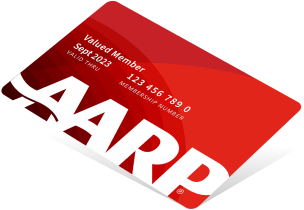AARP Hearing Center

Research shows that people who carry a few extra pounds may live longer. So if you’re on the thin side, should you consider plumping up?
Not necessarily. If you come from a naturally thin family or have consistently had a low body mass index (BMI), a lighter-than-average weight may not be a problem. “Sometimes people have a low BMI but they’re perfectly healthy,” says Allison Miner, a professor of nutrition and dietetics at George Mason University in Fairfax, Virginia. (A BMI of 18.5 is considered underweight.)
Some research has found that having a bit of extra weight as you age may even be good for you. Some studies have found people with higher BMIs after 60 may have a lower dementia risk than those who were underweight or have a normal weight — though it might be because people lose weight as dementia begins to take hold. Having a healthy weight seems to be important for bone strength as well. Being underweight is a risk factor for osteoporosis and increases risk of fractures. (Obesity is also a risk factor for fractures, so striving for a healthy weight is best.)
Unintentionally shedding pounds due to things like illness, depression or a medication that steals your appetite can spell danger in your older years. “Unhealthy weight loss can lead to a state called sarcopenia, which is when you’ve lost so much muscle mass that you don’t have enough for healthy function,” says Naomi Parrella, M.D., chief of lifestyle medicine at Rush University System for Health in Chicago.
Trying to gain weight may sound like an enviable challenge for much of the country but, experts say, putting on pounds can be just as difficult as taking them off. The challenge is making sure that the weight you’re putting on is made up of more muscle than fat. The good news: “The human body is designed to heal and thrive no matter how old you are,” Parrella says.
These strategies can help you put on healthy pounds:
1. First, let your doctor weigh in
If you’re recovering from an illness like cancer, ask your doctor if there are any limitations or considerations you should be aware of as you regain the weight. Likewise, if you’re too blue to feel like eating, seek mental health treatment.
2. Power up your muscles
When you are increasing the number on the scale, good nutrition and muscle building should go hand in hand, says David Creel, director of exercise physiology at the Bariatric & Metabolic Institute at Cleveland Clinic. Strong muscles are key to doing the things you want to as you age and avoiding frailty.
“When we’re talking about loss of muscle, we’re concerned about function, like being able to carry your groceries,” Creel says.
That’s where strength training comes in. You don’t have to work out at the gym or with a trainer, though if you’re new to this type of exercise, a few sessions can be beneficial to learn the proper form.
You can get a decent workout at home using small weights or resistance bands, or just lift household objects (soup cans, milk jugs). Do push-ups against a wall using gravity and your body as the weight, squats while holding onto a counter, and crunches for your core. Aim to work out two days per week, but not on consecutive days, Creel advises.
To get started, check out workout videos for simple strength training exercises on our Staying Fit page.




























































More From AARP
8 Surprising Foods That Help Strengthen Bones
Go beyond dairy to keep your skeleton strongHow Healthy Are Your Cooking and Eating Habits?
See how many of these practices you already use
Health Benefits of 7 Ancient Grains
Delicious alternatives to brown rice that will make your cardiologist happy
Recommended for You